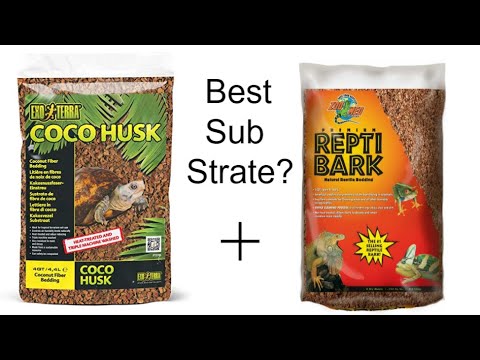Are you wondering, “What is the best substrate for a box turtle?” Look no further; we are here to guide you through the process.

This comprehensive guide will delve into the importance of choosing the suitable substrate, the factors to consider, and our top recommended options.
What Is The Best Substrate For A Box Turtle?
The best substrate for a box turtle combines topsoil, coconut coir, and cypress mulch. This blend provides a natural and soft environment for burrowing, retaining moisture, and mimicking the turtle’s natural habitat. Avoid substrates like sand or gravel, which can cause digestive issues and discomfort for the turtle.
Why Substrate is Important?
The substrate, or bedding, is essential to your box turtle’s life. It serves as the flooring of their enclosure and impacts their health, behavior, and overall well-being.
The right substrate can mimic their natural habitat, assisting in thermoregulation and promoting natural behaviors like burrowing.
Moreover, it aids in maintaining appropriate humidity levels, which is crucial for a box turtle’s skin and shell health.
Factors to Consider When Choosing a Substrate
When choosing a substrate for your box turtle, consider the following factors:
- Humidity retention: Box turtles require a high humidity environment. The substrate should be capable of retaining moisture without becoming overly saturated.
- Texture and comfort: The substrate should be soft and comfortable for your turtle to walk on and burrow in.
- Edibility: Turtles often ingest substrate accidentally while eating. Ensure it is non-toxic and safe if consumed.
- Dust levels: Excessively dusty substrates can lead to respiratory issues.
- Easy to clean: Regular cleaning is crucial for your turtle’s health. Opt for substrates that are easy to spot-clean and replace.
How Deep Should a Substrate Be for a Box Turtle?
Substrate depth is crucial as box turtles are natural burrowers. A 4 to 6 inches depth is ideal, allowing your turtle to burrow comfortably while maintaining the necessary humidity levels in the enclosure.
Top Recommended Substrates for Box Turtles
Several substrates work well for box turtles, including:
- Cypress mulch: This is a popular choice due to its excellent humidity retention and soft texture.
- Coconut fiber: Another preferred option, coconut fiber (coir), is soft, retains humidity well, and is safe if ingested.
- Sphagnum moss: Often mixed with other substrates, it aids in humidity retention and is great for burrowing.
Why Coconut Fiber is the Best Box Turtle Substrate?
Coconut fiber emerges as the top choice due to its several beneficial properties. Its texture is perfect for burrowing, retains the right amount of moisture without becoming too damp, and is safe if accidentally ingested. Furthermore, it is eco-friendly, readily available, and cost-effective.
Substrates to Avoid
Some substrates can be harmful to your box turtle. These include:
- Small, loose particles: Substrates like sand or gravel can cause impaction if ingested.
- Cedar and pine shavings: These release harmful oils that can cause respiratory issues.
- Reptile carpet: It doesn’t retain humidity well and isn’t suitable for burrowing.
Why Avoid These Substrates?
These substrates are to be avoided primarily because they pose health risks. Ingestion can lead to impaction, a severe digestive condition.
Respiratory issues can occur due to dust or harmful oils. Additionally, a lack of humidity retention can lead to dehydration, and an inability to burrow can cause stress in your box turtle.
How to Properly Install and Maintain Substrate in a Box Turtle Enclosure?
When installing the substrate, ensure it is deep enough for your turtle to burrow. Spread it evenly throughout the enclosure, avoiding any large clumps.
Regular maintenance involves spot-cleaning daily, replacing the substrate as necessary, and misting to maintain appropriate humidity levels.
Monitor your turtle for any signs of health issues linked to the substrate, such as respiratory discomfort or changes in eating habits.
Conclusion
In conclusion, the substrate plays a pivotal role in maintaining a healthy and natural environment for your box turtle.
While several options are available, coconut fiber stands out due to its numerous advantages. However, remember that proper installation and regular maintenance are just as crucial as choosing the right substrate.
With the appropriate care, you can provide a thriving habitat for your box turtle, promoting its overall well-being.

